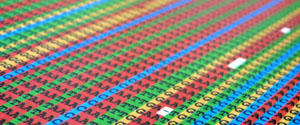Challenge 3: Unusual mutation patterns
Unusual mutation patterns
Cancer Grand Challenges is a global funding platform supporting scientists to take on the toughest challenges in cancer. Through a series of £20 ($25) million awards, we are giving international teams of researchers the freedom to think differently, act creatively and explore novel techniques.
We’d like to stop cancer before it starts – prevention is better than cure. However, we don’t yet know all the individual events that can induce cancer, and we need to better understand the effects on our DNA of the cancer-causing events we already know about.
In 2015, one of our Cancer Grand Challenges was:
DISCOVER HOW UNUSUAL PATTERNS OF MUTATION ARE INDUCED BY DIFFERENT CANCER-CAUSING EVENTS
This challenge is now closed for applications.
Funded team for this challenge:
Contact us
If you have a question about Cancer Grand Challenges please get in touch by emailing info@cancergrandchallenges.org
 Challenge 3: Unusual mutation patterns
Challenge 3: Unusual mutation patterns